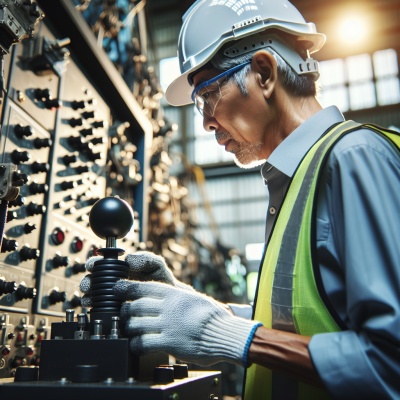Choosing the right industrial joystick is a crucial decision for ensuring efficient operation in various applications such as aerial work platforms (AWP), construction machinery, and heavy-duty operations. With a multitude of options available on the market, it’s important to consider several factors to identify the joystick that best suits your specific needs.

1. Application Requirements
Understanding the specific application for which the joystick is intended is the first step in your selection process. Different industries have unique demands that influence joystick design. For example, joysticks used in aerial work platforms must offer precise control for delicate maneuvers, whereas joysticks for cranes or excavators may require robust functionality to handle heavy workloads. Determine whether the joystick will be used for controlling machines like forklifts, cranes, excavators, or in specialized fields like CCTV or hydraulic systems.
2. Control Type
Joysticks come in various control types, including single-axis or dual-axis options, proportional control, and multi-directional inputs. Assess the control requirements of your machinery; for instance, if your applications demand sophisticated movements, a dual-axis joystick may be more suitable. Additionally, consider whether a proportional joystick, which offers variable speed and direction based on input, is required for more nuanced tasks.
3. Ergonomics and Design
The design of the joystick significantly impacts operator comfort and efficiency. Look for ergonomic designs that reduce hand fatigue during prolonged use. Features such as grip style, button layout, and the joystick’s height should be considered. Ensure that the joystick is easy to handle and allows for quick, precise movements.
4. Durability and Environmental Resistance
Industrial environments can be harsh, so it’s essential to choose a joystick that is built to withstand challenging conditions. Look for joysticks made from durable materials and those that offer IP-rated protection against dust and moisture. This is particularly important for machinery used outdoors or in wet environments. Additionally, consider the joystick’s resistance to wear and tear over time.
5. Customization Options
Not all applications are the same, which is why customization can be beneficial. Many manufacturers offer joysticks that can be tailored to specific operational needs. This can include adjustable sensitivity, customizable buttons, and various handle designs. Make sure to research options that allow for modifications to suit your operations.
6. Compatibility
Ensure that the joystick is compatible with your machine’s control systems. This often involves checking communication protocols and electrical specifications. Compatibility issues can lead to expensive downtimes or operational inefficiencies.
7. Brand Reputation and Support
Finally, consider the reputation of the manufacturer. Look for established companies known for producing high-quality industrial joysticks. Brands with a history of innovation and a commitment to customer service will likely provide better support for installation, customization, and ongoing maintenance.
Shanghai Chengong Electrical Control Co., Ltd. stands out as a leader in the field of industrial joysticks. As a manufacturer devoted to joystick innovation, research and development, production, and customization services for over 20 years, CGEC has built a reputation for excellence. With more than 20 series of products and 5 national patents, the company serves clients both locally and globally across multiple industries. Their joysticks are widely used in applications like aerial work platforms (AWP) for prominent brands such as Genie, JLG, Haulotte, Skyjack, Manitou, Snorkel, SANY, XCMG, ZOOMLION, DJI, and others.